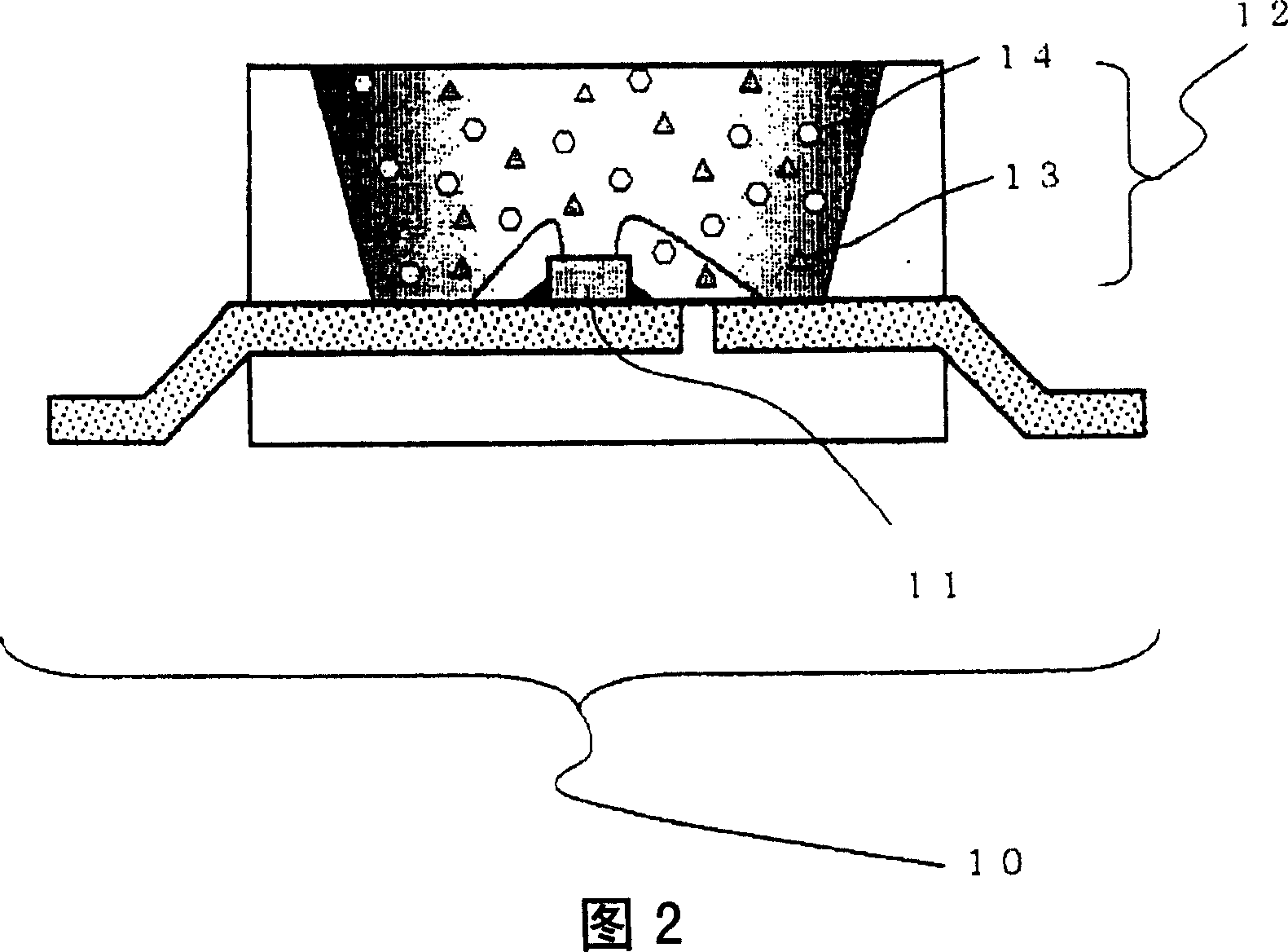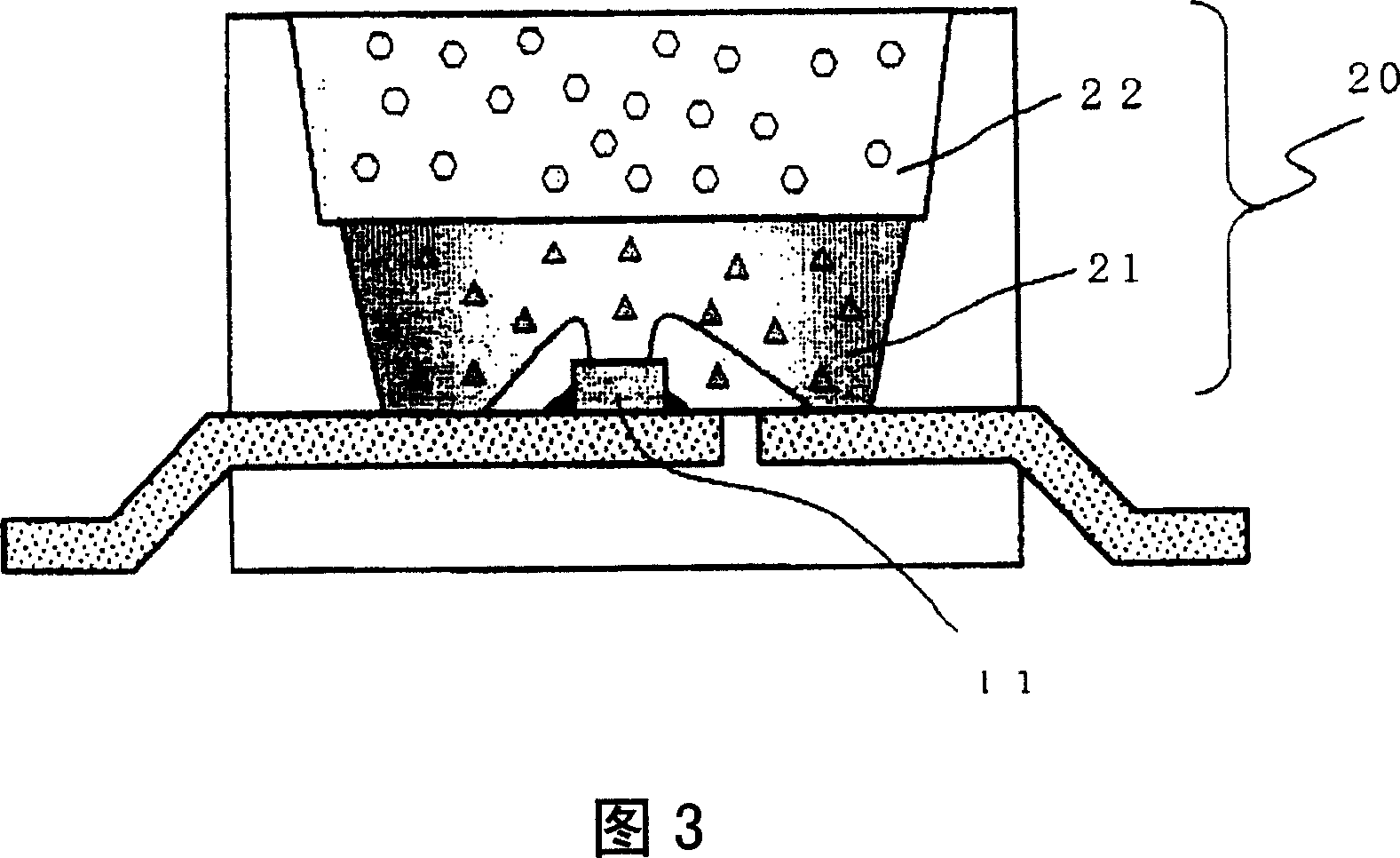Light-emitting device
A technology of light-emitting devices and light-emitting elements, which is applied in the direction of light-emitting materials, lighting devices, fluorescence, etc., can solve the problems of unusable and difficult to obtain products with low correlated color temperature, and achieve the effect of small deviation of black track
- Summary
- Abstract
- Description
- Claims
- Application Information
AI Technical Summary
Problems solved by technology
Method used
Image
Examples
Embodiment 1
[0092] Fig. 2 is a schematic longitudinal sectional view of a light emitting device according to Embodiment 1 of the present invention. This light emitting device 10 includes: a light emitting element 11 that emits primary light; and a wavelength conversion unit 12 that absorbs at least part of the primary light and emits secondary light having a wavelength equal to or greater than the primary light wavelength. The wavelength conversion unit 12 includes a red light emitting phosphor 13 and a green light emitting phosphor 14 dispersed in a resin.
[0093] In Example 1, a gallium nitride (GaN)-based semiconductor having a peak wavelength of 450 nm was used as a light-emitting element. Ca used as a green light-emitting phosphor is included in the wavelength conversion part 3 (Sc 0.85 Ce 0.15 ) 2 (SiO 4 ) 3 (Particle size: 8.9μm), (Ca 0.98 Eu 0.02 )AlSiN 3 (Particle size: 3.8 μm). These green-based light-emitting phosphors and red-based light-emitting phosphors were mixe...
Embodiment 2
[0097] As a light-emitting element, a gallium nitride (GaN)-based semiconductor having a peak wavelength of 435 nm was used. In the wavelength conversion part, 9.3 μm 2 (Ba 0.60 Sr 0.38 Eu 0.02 )O·SiO 2 , and 50% by weight of 10.5 μm 2 (Sr 0.80 Ba 0.18 Eu 0.02 )O·SiO 2 , as a red light-emitting phosphor, a 3.6μm-containing (Ca 0.94 Mg 0.05 Eu 0.01 )(Al 0.99 In 0.01 )SiN 3 As a material, a mixture of these green-based light-emitting phosphors and a red-based light-emitting phosphor are mixed at a weight ratio of 1:0.31, dispersed in epoxy resin, and molded to form a wavelength conversion part. In this way, the light-emitting device in Example 2 having the structure shown in FIG. 2 was produced.
Embodiment 3
[0101] Fig. 3 is a schematic longitudinal sectional view of a light emitting device according to Embodiment 3 of the present invention. This light-emitting device includes: a light-emitting element 11 that emits primary light; and a wavelength conversion unit 20 that absorbs at least part of the primary light and emits secondary light having a wavelength equal to or greater than the primary light wavelength. The wavelength conversion unit 20 includes a resin layer (red light emitting phosphor layer) 21 containing dispersed red light emitting phosphors and a resin layer (green light emitting phosphor layer) 22 containing dispersed green light emitting phosphors. . Further, the red-based light-emitting phosphor layer 21 is disposed adjacent to the light-emitting element 11 , and the green-based light-emitting phosphor layer 22 is laminated thereon.
[0102] In Example 3, a gallium nitride (GaN) semiconductor having a peak wavelength at 435 nm was used as a light emitting elemen...
PUM
| Property | Measurement | Unit |
|---|---|---|
| Particle size | aaaaa | aaaaa |
| Particle size | aaaaa | aaaaa |
Abstract
Description
Claims
Application Information
 Login to View More
Login to View More - R&D
- Intellectual Property
- Life Sciences
- Materials
- Tech Scout
- Unparalleled Data Quality
- Higher Quality Content
- 60% Fewer Hallucinations
Browse by: Latest US Patents, China's latest patents, Technical Efficacy Thesaurus, Application Domain, Technology Topic, Popular Technical Reports.
© 2025 PatSnap. All rights reserved.Legal|Privacy policy|Modern Slavery Act Transparency Statement|Sitemap|About US| Contact US: help@patsnap.com



